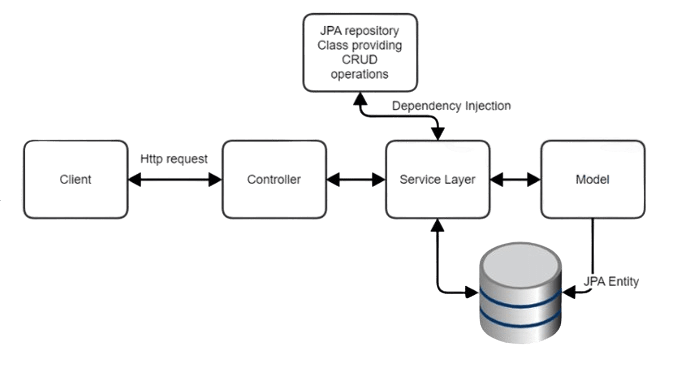The syllabus for Spring Framework covers a wide range
of topics essential for understanding and effectively
using Spring to develop enterprise applications.
1. Introduction to Spring Framework
- Overview of Spring Architecture
-
Dependency Injection (DI) and Inversion of Control
(IoC)
- Bean Lifecycle and Scope
- Configuration with XML and Annotations
2. Spring Core
- Spring Beans and ApplicationContext
- Bean Autowiring and Qualifiers
- Profiles and Environment
- Bean Post Processors and Factory Beans
3. Aspect-Oriented Programming (AOP)
- Understanding AOP Concepts
- Creating Aspects and Advices
- Pointcuts and Joinpoints
- AspectJ Integration
4. Spring MVC
- Introduction to Spring MVC Architecture
-
Controller Layer: @Controller and @RequestMapping
- View Layer: ViewResolver and JSP Integration
- Model Layer: @ModelAttribute and Data Binding
5. Data Access with Spring
- Integration with JDBC
- Spring Data and Repository Pattern
- ORM Integration with Hibernate and JPA
- Transaction Management with Spring
6. Spring Security
- Introduction to Spring Security
- Authentication and Authorization
- Securing Web Applications
- Custom Authentication Providers
7. Spring Boot
- Introduction to Spring Boot
- Auto-Configuration and Starter Dependencies
- Spring Boot CLI and Actuator
- Deploying Spring Boot Applications
8. Spring Testing
- Unit Testing with JUnit and Mockito
- Integration Testing with Spring TestContext
- Testing Spring MVC Controllers
- Mocking Dependencies and Web Components
9. Spring Cloud
- Introduction to Spring Cloud
- Service Registration and Discovery
- Client-Side Load Balancing
- Distributed Configuration Management
Conclusion
- Summary of Spring Framework Concepts
- Best Practices for Spring Development
- Resources for Further Learning
This syllabus provides a comprehensive foundation in
the Spring Framework, enabling developers to leverage
its features and build robust, scalable, and
maintainable enterprise applications.



